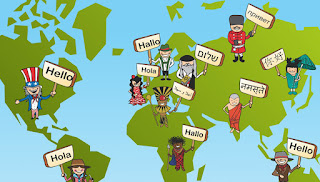What is the Hardest Language to Learn?
Learning a new language is one of the most productive challenge that you can accept. You must have been wondering what is the hardest language to learn and what is language difficulty ranking,
When language learners research most difficult languages, they often stumble upon the language difficulty ranking published by the Foreign Service Institute (FSI). FSI is the United States federal government’s training institution for employees of the U.S. foreign affairs community.
The FSI ranked many languages based on the approximate amount of time a native English speaker needs to spend learning them in order to reach what the FSI calls general professional proficiency in speaking and reading. The FSI has created a list to show the approximate time needed to learn a specific language as an English speaker.
Here are the groups created by the FSI:
1. Languages closely related to English (575–600 class hours) – Afrikaans, Catalan, Danish, Dutch, French, Galician, Italian, Norwegian, Portuguese, Romanian, Spanish, Swedish.
2. Languages similar to English (750 hours) – German.
3. Languages with linguistic and/or cultural differences from English (900 hours) – Indonesian, Malaysian, Swahili.
4. Languages with significant linguistic and/or cultural differences from English (1100 hours): Albanian, Amharic, Armenian, Azerbaijani, Bengali, Bosnian, Bulgarian, Burmese, Croatian, Czech, Estonian, Finnish, Georgian, Greek, Hebrew, Hindi, Hungarian, Icelandic, Khmer, Lao, Latvian, Lithuanian, Macedonian, Mongolian, Nepali, Pashto, Persian, Polish, Russian, Serbian, Sinhala, Slovak, Slovenian, Tagalog, Thai, Turkish, Ukrainian, Urdu, Uzbek, Vietnamese, Xhosa, Zulu.
5. Languages which are exceptionally difficult for native English speakers (2200 hours) – Arabic, Cantonese, Mandarin, Japanese, Korean.
There are many experts who would range the languages differently. But if you want to read about top hardest languages for English speaker, you can find the information on the website.
When language learners research most difficult languages, they often stumble upon the language difficulty ranking published by the Foreign Service Institute (FSI). FSI is the United States federal government’s training institution for employees of the U.S. foreign affairs community.
The FSI ranked many languages based on the approximate amount of time a native English speaker needs to spend learning them in order to reach what the FSI calls general professional proficiency in speaking and reading. The FSI has created a list to show the approximate time needed to learn a specific language as an English speaker.
Here are the groups created by the FSI:
1. Languages closely related to English (575–600 class hours) – Afrikaans, Catalan, Danish, Dutch, French, Galician, Italian, Norwegian, Portuguese, Romanian, Spanish, Swedish.
2. Languages similar to English (750 hours) – German.
3. Languages with linguistic and/or cultural differences from English (900 hours) – Indonesian, Malaysian, Swahili.
4. Languages with significant linguistic and/or cultural differences from English (1100 hours): Albanian, Amharic, Armenian, Azerbaijani, Bengali, Bosnian, Bulgarian, Burmese, Croatian, Czech, Estonian, Finnish, Georgian, Greek, Hebrew, Hindi, Hungarian, Icelandic, Khmer, Lao, Latvian, Lithuanian, Macedonian, Mongolian, Nepali, Pashto, Persian, Polish, Russian, Serbian, Sinhala, Slovak, Slovenian, Tagalog, Thai, Turkish, Ukrainian, Urdu, Uzbek, Vietnamese, Xhosa, Zulu.
5. Languages which are exceptionally difficult for native English speakers (2200 hours) – Arabic, Cantonese, Mandarin, Japanese, Korean.
There are many experts who would range the languages differently. But if you want to read about top hardest languages for English speaker, you can find the information on the website.




Комментарии
Отправить комментарий